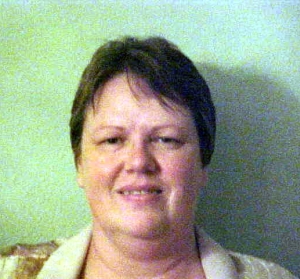Finding a Career Path via GPS Navigational Systems

|
Though it might seem a bit "Harry Potterish," the information displayed on a GPS navigational system screen occurs as a result of the work of geodetic scientists, such as SIUE alumna Barbara Wiley (B.S. '85, Physics and Mathematics), who studies the size and shape of the earth and how to position things in reference to it.
Wiley works in St. Louis as the senior technical advisor to the GPS division of the National Geospatial-Intelligence Agency (NGA), which aims to provide timely, relevant and accurate geospatial intelligence in support of national security objectives. Geospatial intelligence involves the exploitation and analysis of imagery and geospatial information to describe, assess and visually depict physical features and geographically referenced activities on the earth. In other words, it fuses intelligence information-what is going on-with geospatial information-where it is happening.
Information collected and processed by the NGA is then tailored for customer-specific solutions. By giving customers ready access to geospatial intelligence, the NGA provides support to civilian and military leaders and contributes to the state of readiness of U.S. military forces. The agency also contributes to humanitarian efforts such as tracking floods and fires, and in peacekeeping.
As the technical leader in her division, Wily helps determine her team's technical direction in terms of what can be done to improve the U.S. Air Force's GPS, which is used all over the world for positioning, navigating and timing.
Wiley noted that, GPS is used today in many applications for which it was never designed. "Who would have thought thirty years ago that it would be common to have a personal phone, personal computer and a navigation device in your car?" said Wiley. "GPS is used for all of these."
Originally, Wiley began work in geodesy simply because she was looking for a career related to her degree in physics and mathematics. When she entered the field, Wiley said she was well-versed in the science behind the information, but she still needed to learn how to put the information together into a coherent product for customers.
"I really expected to do analysis all of the time-crunching numbers and coming up with new equations," Wiley said. "My reality is that I write and edit-a lot." The majority of Wiley's time is spent in documentation, which is important because that's what gets information out to the user.
As a dual major in mathematics and physics, Wiley estimates that she took only two English courses during her college career. "It never occurred to me that I needed to be able to write well," she said. "I had to learn it on-the-job. If you want your project to succeed, you have to document it to publish results and get resources."
Continual documentation becomes even more critical as automation and increased computer computation capability have reduced the time required to process work and allowed the amount of information produced to skyrocket.
"Jobs that used to take three weeks to finish are now done in hours-and they include more information," Wiley said. "The resulting products are much more accurate and more quickly delivered."
Ever-increasing technological developments create continual demand for more accuracy within a shorter time-span, explained Wiley. As a result, the NGA's system for modeling physical phenomena must constantly improve in order to be able to predict such things as atmospheric phenomena and the movement of satellites in order to meet changing time and accuracy expectations.
Outside of work, Wiley's time generally revolves around her three children, all of whom are under 18. She also enjoys reading mysteries and science fiction. "As a scientist, I like to discover things, so that explains the mysteries," Wiley said. "Also being a scientist, I have to ignore the scientific errors and impossibilities that make science fiction so much fun."
Wiley said her only notable travel experiences involve the routine difficulties of getting in and out of airports faced by everybody else. "I recently spent twenty hours getting home from Washington, D.C.-a trip that should take no more than four hours," she said. "Isn't it funny that my background in mapping and positioning does not help me get where I want to go any faster?"
